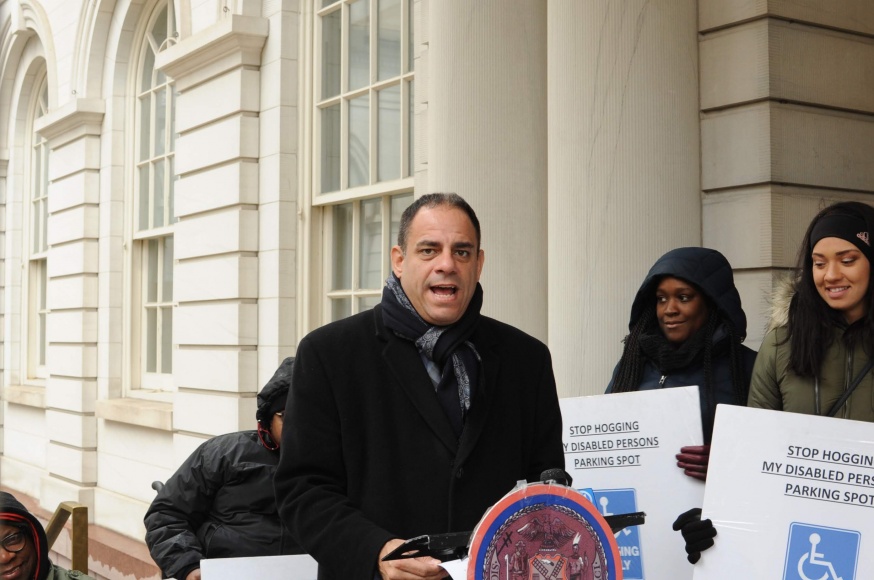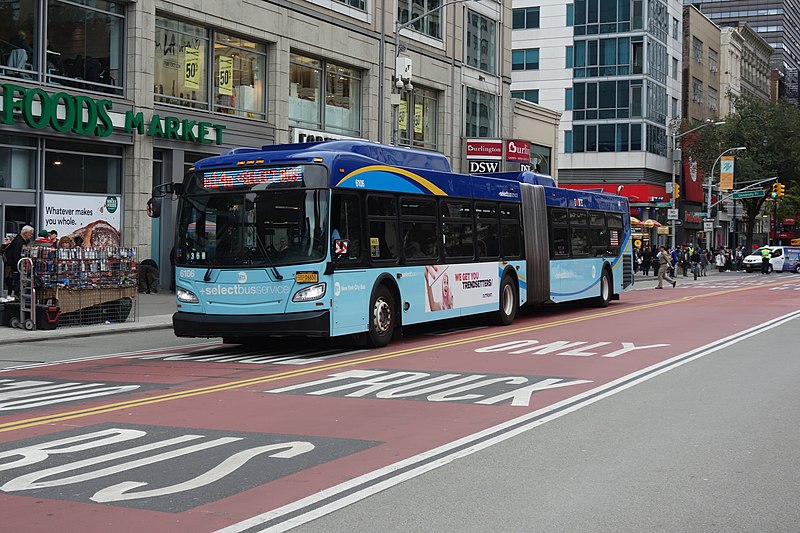
(Courtesy of Council Member Costa Constantinides Office)
March 10, 2020 By Allie Griffin
Astoria Council Member Costa Constantinides unveiled a plan today to improve Queens transportation, as part of his campaign for borough president.
The candidate proposed adding protected bike lanes and busways, as well as giving borough presidents an appointee on the MTA board — an early campaign selling point — and pushing the MTA to reopen the Elmhurst Long Island Rail Road station.
The plan’s release comes on the heels of an endorsement Constantinides earned from Streets PAC, a political action committee dedicated to improving street safety for pedestrians and cyclists as well as transportation options.
“We believe unequivocally that Costa Constantinides is the best choice for Queens voters concerned about safer streets and better public transportation,” Streets PAC said in a statement.
If elected on the March 24 special election, Constantinides said he would introduce a number of measures to improve public transportation options and keep pedestrians safe on Queens streets.
Taking inspiration from Manhattan’s 14th Street busway, Constantinides would pilot an east-to-west and a north-to-south busway route to see whether busways are viable in the borough as an alternative to personal vehicles.
Constantinides is also calling for 75 miles of protected bike lanes in Queens in 2021.
-
He also said he would push the MTA to reopen the Elmhurst LIRR station, which was closed 35 years ago because of low ridership numbers.
- In order to put pressure on the MTA, Constantinides has proposed giving borough presidents an appointee on the MTA board.
- In January, Assemblymember Aravella Simotas and State Senator Andrew Gounardes of Brooklyn picked up on Constantinides’ call and introduced a bill to give each borough a dedicated seat on the board.
The 16 MTA board members decide on MTA policy, the authority’s budget and fare increases.
Critics of the board say the current membership gives a larger share of votes to people who live outside New York City, while the vast majority of people who ride MTA buses and subways live within the five boroughs.
The mayor gets to appoint just four members to the board and there is nothing that dictates where each comes from within the city. Meanwhile, the state gets six appointees and Westchester, Suffolk and Nassau counties each get one appointee — all of whom have a full vote. The upstate counties of Dutchess, Putnam, Rockland and Orange split one combined vote.

14th Street Busway in Manhattan (Photo: Wikimedia commons)
7 Comments

Thank you, Queens needs this!
Vote Quinn!
Traffic has tripled since all these road changes for bike lanes it needs to stop!!! 20th Avenue is now a nightmare to drive down ,shore Blvd going one way only caused more traffic on 21st street making crossing the blvd even more BRUTAL.. where is the room for designated bus lanes? This isn’t like midtown where 10 buses at a time are driving down the street. Barricades for bike lanes only mean ugly concrete blocks which will take up more parking space or annoying reflective signs everywhere .Find something else to do with tax payer money . Stop ruining the neighborhood
I like the idea of bus lanes only but NYC was not designed for bikes and cars together
How much money will Costa pocket if he becomes borough president from projects like this? Astoria has more mentally ill homeless on the street, people being mugged and assaulted under Costas leadership, he supports the crazy bail reform and is more concerned about criminals and illegals than about law abiding residents. He needs to be removed from office.
There is good news coming from Washington concerning the availability of even more funding to support public transportation in Queens. The MTA receives over $1.4 billion annually from the Federal Transit Administration. These dollars are used to fund various capital improvement projects for NYC Transit subway and bus, Long Island Rail Road, Metro North Rail Road, MTA Bus (comprised of routes and garages previously comprising the old private NYC DOT franchised bus operators including Green Bus, Queens Surface, Jamaica Bus, Triboro Coach, Command Bus, Liberty Lines Bronx Express and New York Bus before being transferred to MTA under a Master Lease and Operating Agreement in 2005) and MTA Capital Construction Company. Most federal transportation grants require a 20 percent hard-cash local share. FTA accepted toll credits instead of hard cash for the local share. This saved the MTA over $1 billion in the previous $32 billion 2015-2019 five-year capital program. The MTA will save $1.6 billion under the $51 billion 2020-2024 five-year capital program when applying for $8 billion in future FTA funding.
Washington will eventually make available over $1.4 billion in 2020 FTA formula funding for the MTA. This helps pay for a significant portion of its capital program. This includes $28 million in Buses and Bus Facilities; $793 million in Section 5337 State of Good Repair and $672 million in Section 5307 Urbanized Area federal funding. There are other opportunities for up to several hundred million more in discretionary competitive federal grants.
There are other annual formula FTA grant programs such as Urban Area Formula 5307, Capital Annual Investment 5309, Buses and Bus Facilities 5339 along with Congestion Mitigation Air Quality and several other Federal Highway Administration grant programs, which can be transferred over to FTA.
The FTA announced on January 30th a Notice of Funding opportunity to apply for approximately $454,6 million in Fiscal Year 2020 competitive grant funding for bus and bus facility projects nationwide.
The purpose of competitive grants for Buses and Bus Facilities Program is to assist in improving the condition of bus infrastructure by funding the replacement and rehabilitation of buses and related facilities. Projects eligible for this funding opportunity include those that would replace, rehabilitate, lease, or purchase buses and related equipment. Other eligible projects involve purchasing, rehabilitating, constructing or leasing bus-related facilities, such as buildings for bus storage and maintenance.
The FTA previously announced one week earlier the availability of up to $130 million in competitive grant funds through FTA’s Low or No Emission (Low-No) Bus Program. The Low-No Program helps project sponsors purchase or lease low or no emission vehicles that use advanced technologies for transit revenue operations, including related equipment or facilities.
The MTA can also take advantage of FTA pre-award authority prior to grant approval. Use of Pre-award Authority affords the MTA an opportunity to start projects months earlier and incur costs for reimbursement at a later date after grant approval and obligation of funding. The MTA can also take advantage of the opportunity to use option clauses up to five years after award of base bids for the purchase of subway cars and buses. This saves both money and time by not having to start a new procurement from scratch.The MTA currently manages an active portfolio of federally funded capital improvement projects and programs in open grants worth over $12 billion in direct FTA financial assistance.
(Larry Penner — transportation historian, advocate and writer who previously worked 31 years for the Federal Transit Administration Region 2 NY Office. This included the development, review, approval and oversight for grants supporting billions in capital projects and programs on behalf of the MTA, NYC Transit, MTA Bus, Long Island Rail Road, Metro North Rail Road along with 30 other NY & NJ transit agencies)
Any plans for new subway lines? The city is growing like crazy and we still rely on the same old subway, which hasn’t changed in decades except for a short stretch of 2nd ave line.